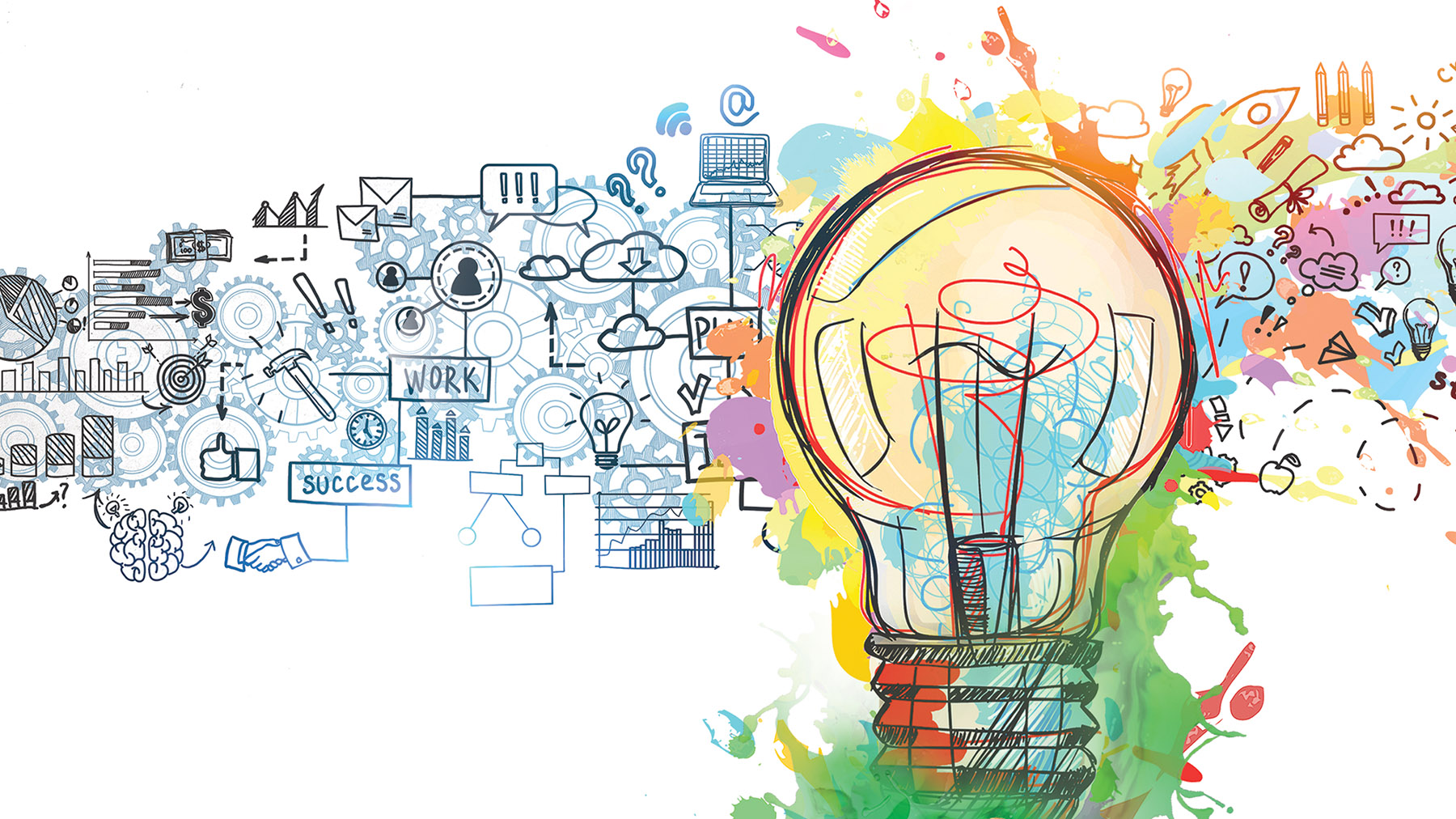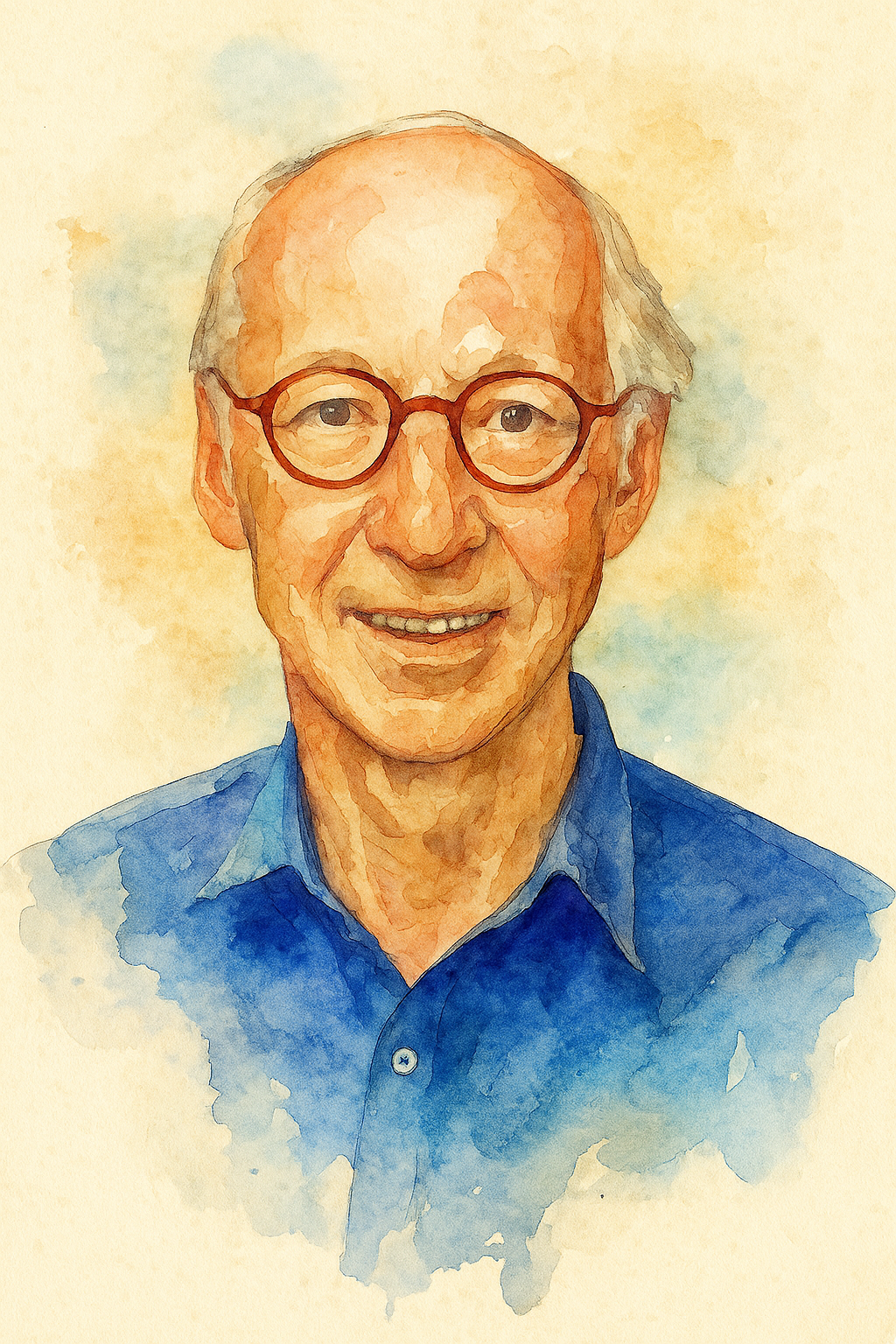Creativity has ‘tied the knot’ between China and John Howkins — the ‘father of the creative economy’. He tells Lu Wanqing that Hong Kong, as a free global financial hub, can become one of the world’s ‘foremost entrepreneur ports of people’ and a regional creative powerhouse.

Editor’s note: The future belongs to those who dare to shape it. In this series, China Daily highlights the bold thinkers and doers who are transforming industries and breaking barriers. Meet John Howkins, who pioneered the concept of the “creative economy” and has spent decades championing creativity as a driving force for global progress, especially in China.
If anyone’s life can be swayed by the force of creativity, it has to do with John Howkins who coined the term “creative economy” and forged a two-decade friendship with China.
In 2006, five years after China joined the World Trade Organization, ushering in a new era of global trade for the country, the father of the “creative economy” put his concept to a global test drive at the invitation of Shanghai municipal government, presenting its future application in a Chinese context.
Howkins was later asked to propose future policies for Shanghai’s creative industries via the John Howkins Research Centre on the Creative Economy that was established that year in support of the municipal government and the Shanghai School of Creativity.
Unbeknownst to him at the time, the move launched his two-decade involvement with one of the world’s largest economies in the making — an enduring relationship that would come to define his career across multiple Chinese cities — leading to a myriad of roles for the renowned author, including visiting professor at the University of Hong Kong.
In 2008, Howkins co-founded Creative Ecology Lab (CrecoLab) — a creative economy think tank in Beijing where he based his work in the country. CrecoLab’s fingerprints marked multiple Chinese national development projects, including the repurposing of Beijing’s Workers’ Sports Complex into a creative space, a digital culture hub with People’s Daily Online, as well as Hainan’s International Design Island under the province’s free-trade port policy framework.
Howkins and the Chinese people clicked immediately. He was struck by the energy, ambition and thirst to learn, the drive to engage globally, and the international scope of their creative sector — from film and design to technology. What impressed him most was a powerful desire to use creativity to build on the culture of the past and reinterpret it for the future.
Howkins says that many people outside China have yet to get the true picture of what’s happening in the country. “I’m intrigued by China’s heritage. I admire China’s instinctive entrepreneurial enthusiasm — from small stores to tech startups — and many aspects of its contemporary life. I wish they were better known in other countries.”
Despite rising geopolitical protectionism and division, he anticipates China playing a bigger role in global discussions. “The world is divided on many matters. I believe creative people in China and elsewhere are a kind of roving intelligence. Countries become powerful by extending their reach and gaining influence. I want to continue visiting China and meeting its people.”
Howkins’ involvement with China in the mid-2000s coincided with the nation’s push to prioritize its creative economy. He was impressed by a concerted drive from the government and society, especially among the vast pool of talented individuals.
A firm believer in Chinese people’s extraordinary creativity, strong manufacturing mindset and design sensibility, Howkins sees them as central to the wider creative ecosystem, the ones adept at creating “something beautiful and beneficial” through a process more integrated and better balanced than in Europe or the United Kingdom, his home country.

Global exchange
Creativity comes with the free flow of ideas — free exchanges among friends, cultures and countries, he explains. “I think Hong Kong can provide a platform not so much for products, but for people.”
He says Hong Kong has the potential to be an “attractive entrepreneur port of people” for the industry, appropriating a notion commonly attributed to a central port hub that allows a smooth movement of goods.
The professor, who holds a teaching post at HKU, recognizes the city’s appeal to Chinese mainland students for its “global, but with Chinese characteristics” programs provided by a world-class cluster of universities. “That combination is a big advantage for Hong Kong universities at all study levels. And, I think, there’s a big opportunity for the universities to provide, if you like, a sort of continuing adult education and inviting people to fly into Hong Kong,” he says.
Amid a shift toward economic insularity, he believes Hong Kong has the potential to be one of the foremost “entrepreneur ports of people” in the global creative scene, with its “free flow of people and ideas”, and entrenched leads in education and technology as key areas.
Howkins has high hopes of the city becoming a regional creative powerhouse after taking the pulse of local industry shakers at the 3rd Art Hong Kong Expo in May.
However, the rivalry posed to Hong Kong by other national and regional centers hasn’t gone unnoticed within the creative realm, he says, citing Shanghai with its locally resonant creative output and increasingly global policy outlook, as well as South Korean and Japanese cities well-shored by world-renowned pop music and anime sectors.
The waning influence of broadcast television tilts the odds against Hong Kong whose creative imprint as Asia’s advertising capital was forged during the golden age of film and television production from the 1970s through the early 2000s.
Today, Hong Kong’s advantages lie mainly in being a “freer, international financial center” — thanks to its judicial independence and status as a separate customs territory under “one country, two systems” and in its “linkages with the country and around the world”, as well as “ease of traffic and communication”.
Hong Kong is a good place to invite people to come and operate, says Howkins. Its creative talent must look beyond the needs and interests of local sectors because of its relatively small population base.
To invigorate its creative economy, meaning an economic chain in its nuances and entirety — from production and distribution to the consumption of goods and services — Hong Kong should export more, making creative offerings of interest to people in other regions.
“What are others doing? What can we do differently? Where do our tenants lie? And what will the region and beyond need in five, 10 years?” asks Howkins who’s a seasoned policy advisor, posing questions for Hong Kong to consider before introducing any new moves.
As integration between Hong Kong and the mainland deepens, he wants the city’s creative industries to recalibrate their present-day strengths to engineer greater synergies with their mainland counterparts. He singles out “working out a relationship within the Guangdong-Hong Kong-Macao Greater Bay Area” — an idea supposedly high on the agenda for Hong Kong’s industrial players.
“Chinese people are very much based around their birthplaces, their families, and there just aren’t enough people coming from Hong Kong into the mainland,” he says. “So, there’s still not that sort of intimacy.”
Howkins, who travels frequently between Hong Kong and the mainland, observes that while “Hong Kong remains bullish about its national role,” creative forerunners in Shanghai and Beijing still tend to look first to their peers closer by on the mainland.
Creative journey
Starting as an international relations graduate in 1968, he took to urban design, obtaining a diploma from the United Kingdom’s Architectural Association four years later, before following his vocation in journalism and broadcasting, producing his first television program in 1982.
“I’m fascinated by visual art and became interested in the media industries — television and film (production),” says Howkins, who considers personal enthusiasm as the main driver responsible for reshaping the course of his early career.
However, when he began his theoretical research on creativity in 1995, it struck him that “by the 1990s, it was clear that many economic theories were wrong”. “They did not recognize the rise in creativity, the importance of art, design and culture, or subsequent changes in the nature of work. We needed a new approach,” he recalls.
Howkins, on behalf of the UK’s TV and film industry, joined a group of like-minded innovators nationwide to hammer out the seminal 1998 Creative Industries Mapping Document, now seen as a move that crystallized the then Tony Blair-led government modernization push. “Everyone liked the idea. It happened very quickly.”
Governments, he notes, understood public infrastructure, engineering, and manufacturing, and they like tourism, but they didn’t really understand the arts, media, design and other creative sectors.
Howkins describes creativity as an exercise in imagination to elevate the value of an idea as it were when a modestly sold script is transformed into a blockbuster. In the creative economy, intellectual property is the common currency.
At 80, he has no plans to call it a day. Instead, he has drawn up an ambitious publishing plan.
Building upon his globally celebrated trilogy — The Creative Economy (2001), Creative Ecologies (2009) and Invisible Work (2020) — he reveals that something new, diving deep into creativity, neuroscience and artificial intelligence, is in the works.
The implications will be vast, he believes, saying, “The psychology of creativity is having a golden era, (touching fields such as) personal health, social wellbeing, education and business management.”
He hints at a lighter compilation on the way, with 1,000 of history’s sharpest quotes on creativity.
Future frontiers
Amid the recent AI hubbub, Howkins sees technology as the most transformative force in reshaping creative industries, stressing that there’s an urgent need to redefine creativity in this changing context. “AI is having a major impact on creativity, and yet, we’re only at the beginning.”
As he sees it, AI’s “instant attraction” to word-based creators — a large chunk of the creative economy — its profound effect on digital production, the challenges it poses to the slow-to-adapt education system and the traditional human-machine dynamic are shifts that merit the most attention.
For an AI-driven future, he’s keeping a close eye on China and the United States.
Following OpenAI’s launch of the generative AI model ChatGPT that electrified the industry in late 2022, its open-source, lower-cost Chinese counterpart DeepSeek provided further invigoration to the sphere this year, and firm peer pressure.
“In many ways, AI tools are using the same mathematics and models and moving along the same path, but with different approaches. It will be interesting to see how each approach develops and the effects worldwide.”
Overall, there’s an embracing tone. “In a way, creative industries, like filmmaking, have used every device in the book,” says Howkins. “Tech has been built into the mass media, broadcast radio, television, filmmaking, newspapers and magazines for 100 years.
“And AI is philosophically exactly the same. It’s adjusting,” he adds, noting that his production companies are currently using about 23 specialist AI applications daily.
But Howkins, a lifetime pathfinder who has always embraced his creative instincts and thrived in idea-spurring conversations with others, ultimately puts his belief in a more human concern.
“Can machines be creative? If you like, they can become a second brain. But, if human decisions are made badly (during the creation process), well, the brain will find it frustrating,” he says.
“Creativity is a natural result, but only if someone is put in infinity, in conversation, when they can look around at this extraordinary world we experience in lights, sounds and meanings.”
Contact the writer at wanqing@chinadailyhk.com


